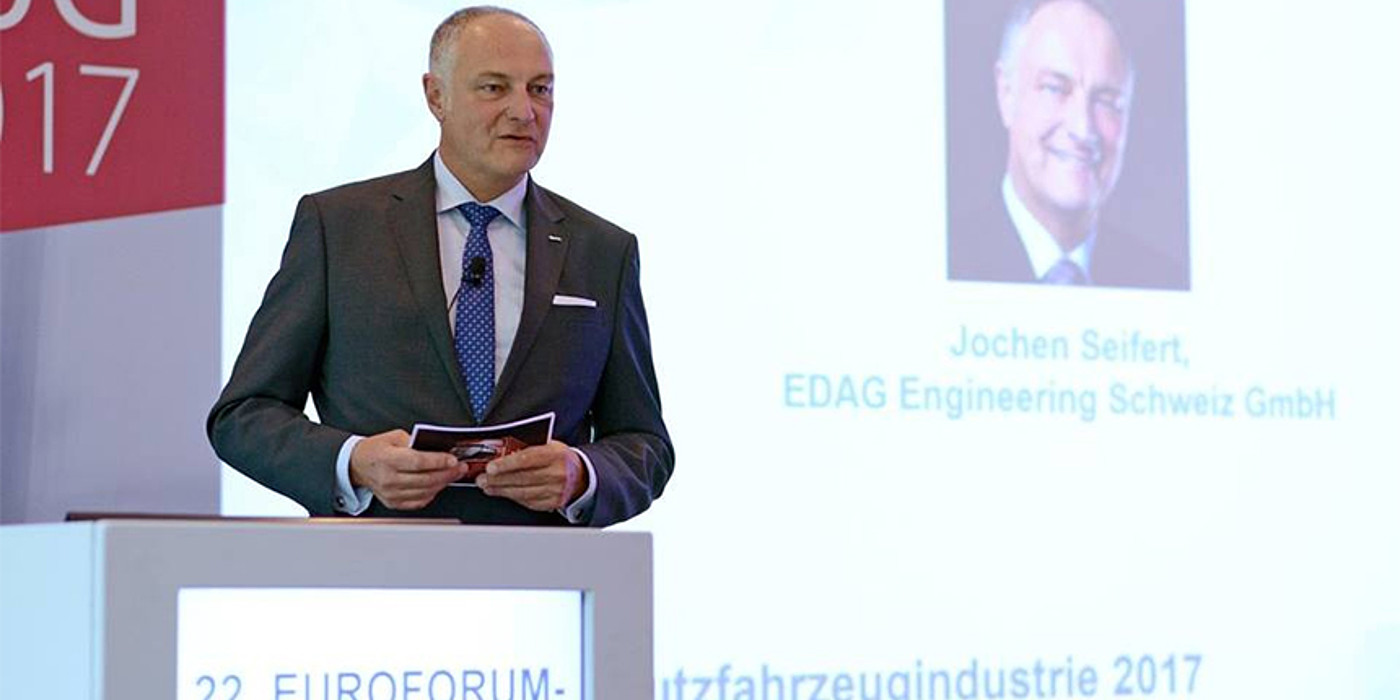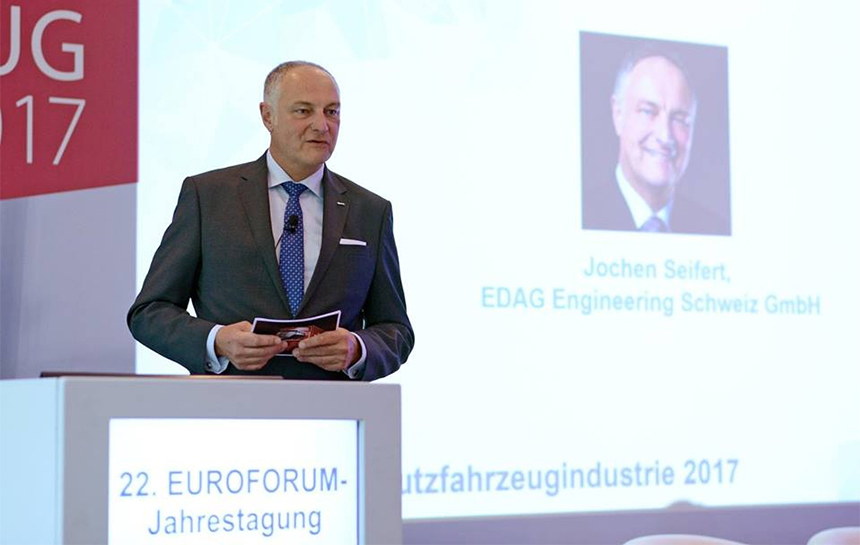Digitisation, connectivity, reducing CO2 levels, emission-free and regenerative powertrains, but above all, individualised delivery transport for last mile delivery are the current trends in the commercial vehicle industry. For the seventh time now, Jochen Seifert, CEO of EDAG Engineering Schweiz GmbH in Arbon, took the chair at the two-day event in Munich, where he welcomed the who's who of the sector to a high-calibre exchange of ideas on these trends.
The last IAA trade show in Hanover was not so very long ago. In Hanover and now more recently at the annual conference "Trends in the Commercial Vehicle Industry" in Munich, the main focus was firmly on the mega themes of digitisation, connectivity and delivery transport, particularly in urban areas. A conventional "steel and iron" commercial vehicle show takes on an almost historical character, when before long, the transport and logistics industries will be making use of flying drones, and what is more everything else will also be in (electric) movement. But it wasn't all bits and bytes: volts and watts played an increasing role at both events. All-electric delivery lorries and tractor units made by German OEMs, all due to appear in the very near future, came under review. To this were added reports that Tesla is now also considering the commercial vehicle sector, or publications on revolutionary vehicle concepts such as the Nikola One.
"Increasingly linked to a highly developed infrastructure, more than anything else it is the high-tech truck that makes it possible for materials and goods to be transported safely, efficiently and reliably every day, and this is one of the essential process variables of our economic processes," explained Jochen Seifert, EDAG Switzerland. "This vehicle type, which cannot be beaten for diversity and variability, must be constantly reinventing itself in order to maintain an ideal position in the face of the fundamentally changing basic conditions in the transport sector and, last but not least, to continue to take the pole position in the transport carrier rankings."
The two-day annual conference in Munich was given over to discussing the trends of tomorrow and beyond, and the question of what the commercial vehicle sector will be concentrating on in the coming years.
Stuttgart is putting the brakes on particulate emissions, and it can be assumed that other cities and urban areas will be applying access restrictions and zero emission standards to prevent any further deterioration in the quality of life. Aside from the complete electrification of the drivetrain and the appearance of completely new vehicle concepts for urban traffic, this could also give rise to new types of fuel that to a great extent can be produced from regenerative energy sources e.g. hydrogen or methane.
However, not just in urban areas but essentially on a global basis, one of the most challenging tasks is to reduce CO2 emissions by 70 percent by 2050, based on 2010 levels, and this can only be done by taking a holistic approach. This calls for the optimum interaction of the vehicle itself, with the increasing integration of tractor units and trailers, of the fuels and the actual vehicle deployment. Possible new layout scope for the manufacturers, in conjunction with the implementation of the EU length guidelines, can make a substantial contribution to fuel efficiency and the safety of other road users.
As an innovation driver and technology trendsetter, the commercial vehicle industry once again faces challenging tasks. Only with flexibility, strong creative drive and short innovation cycles will it be possible to meet these high standards. The political world, too, is called upon to finally get around to creating binding conditions that will enable the commercial vehicle industry and transport sector to plan and act more effectively.
As an independent engineering partner, the design engineering company EDAG contributes in many areas towards making the truck into a transport medium fit for the future. As well as day-to-day business and the development of complete cabs and numerous vehicle chassis solutions, the Wiesbaden-based company also develops innovative chassis architectures, systematically follows up promising lightweight design concepts and, by means of sophisticated modular solutions brings about a wide range of variants, but at the same time the flexible and economically viable production or derivatives, because a commercial vehicle is also always a made-to-measure suit. Only in this way can the high demands made of these commodities be met. "The truck operator is interested in the reliability of his vehicles, but above all in their TCO (total cost of ownership). To achieve an overall optimum here, all the components of the truck must work together to perfection. And this is exactly where our know-how and competence come in. As an engineering service provider that works as equals with OEMs, we can provide innovative solution proposals in all decisive disciplines, as well as profound concept competencies," explained Jochen Seifert.

